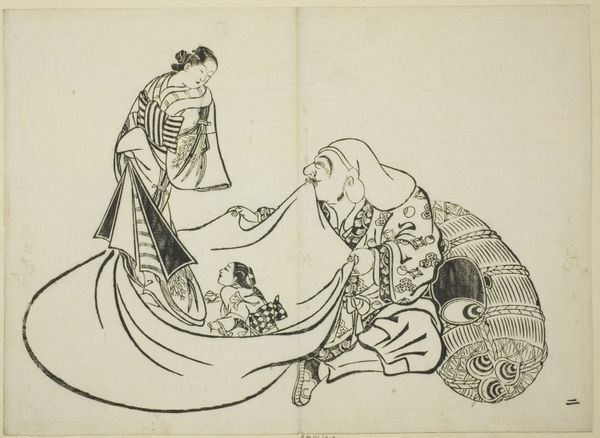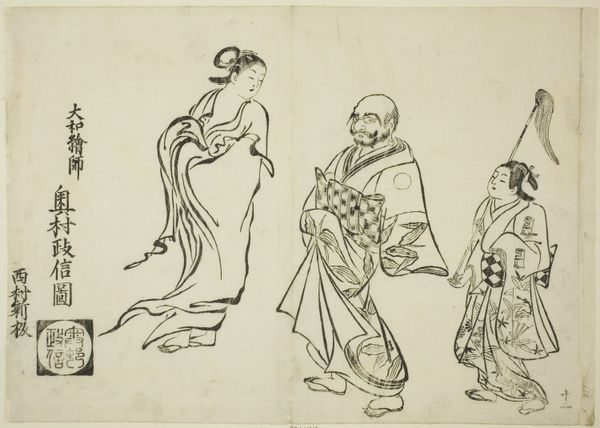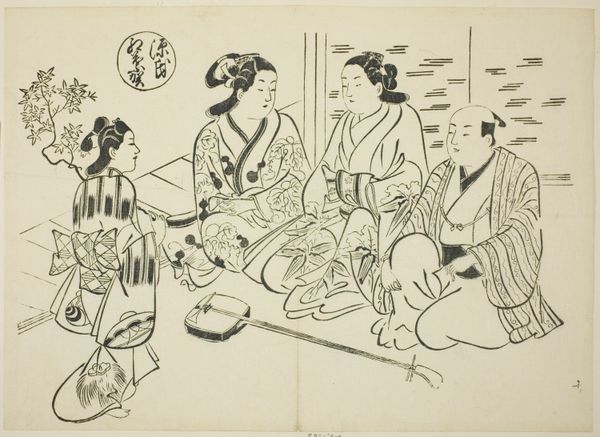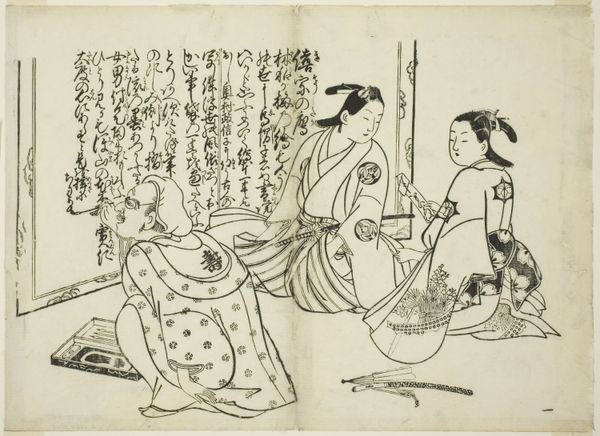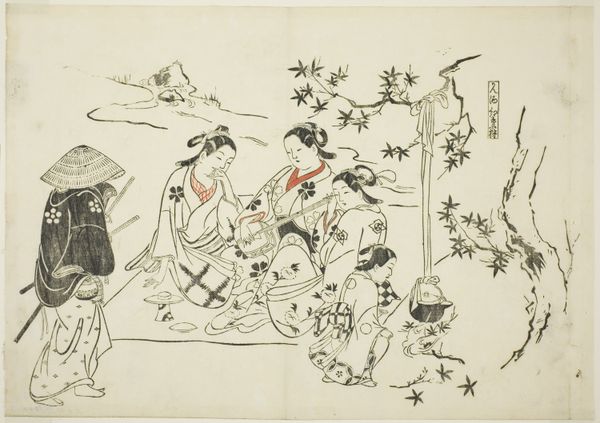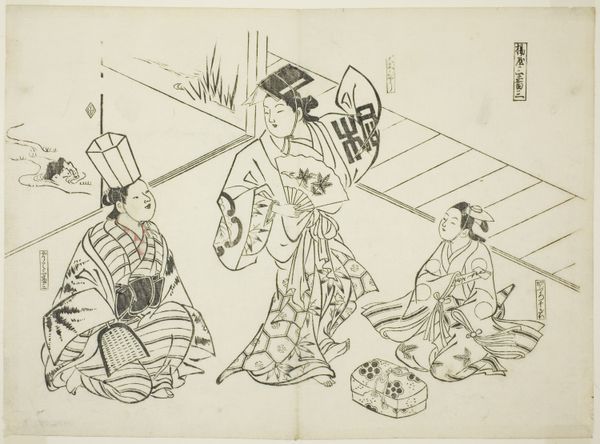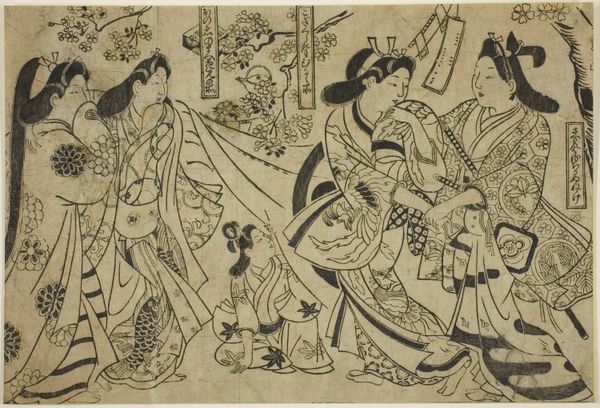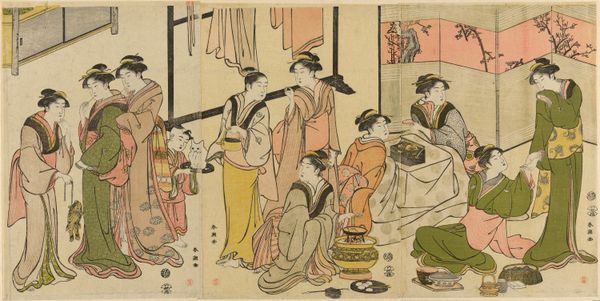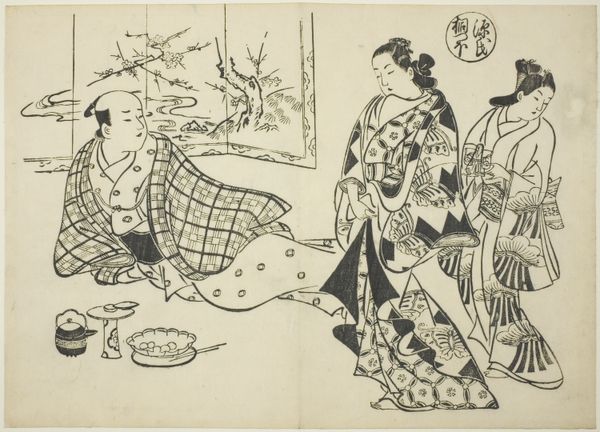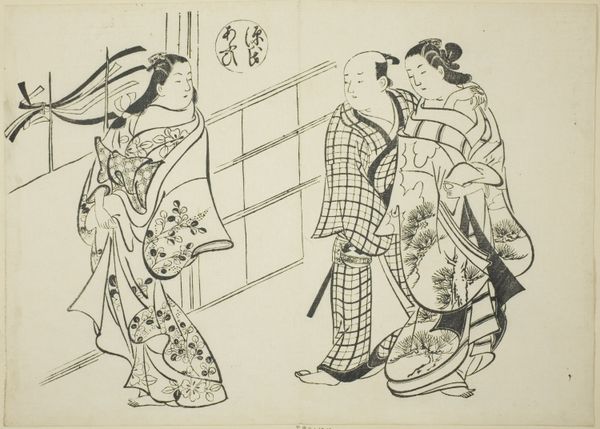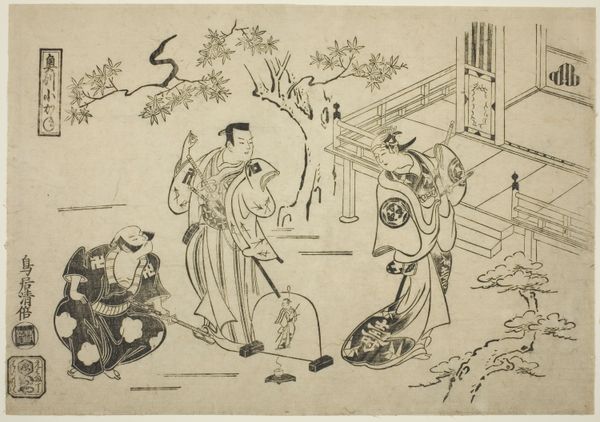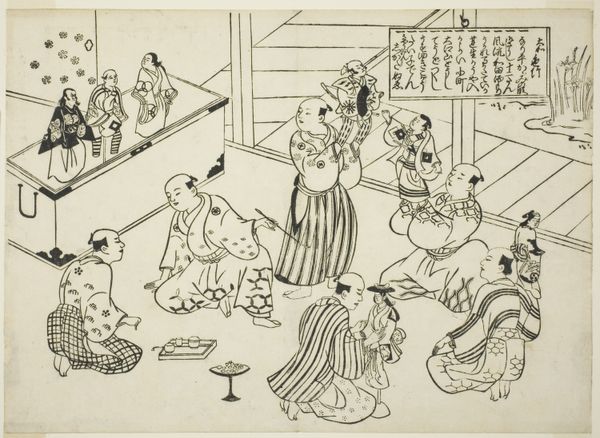
Komachi resting on a stupa, no. 6 from a series of 12 prints c. 1708
0:00
0:00
print, paper, ink, woodblock-print
#
narrative-art
# print
#
asian-art
#
ukiyo-e
#
figuration
#
paper
#
ink
#
woodblock-print
Dimensions: 26.7 × 38.1 cm
Copyright: Public Domain
Curator: Allow me to introduce Okumura Masanobu’s “Komachi resting on a stupa, no. 6 from a series of 12 prints," circa 1708, a striking woodblock print now housed at The Art Institute of Chicago. Editor: My first impression is one of quiet contemplation—the composition's stark black and white creates a rather meditative atmosphere, wouldn't you agree? Curator: Absolutely. The monochrome palette enhances the linework, allowing us to focus on the precise contours of the figures and their relationship to the negative space. Note how Masanobu employs varied line weights to create depth. Editor: This print is part of a larger series that explores the narrative of Komachi, the famed poet. The stark depiction of a female figure, potentially disenfranchised and marginalized by societal expectations of the era, could resonate deeply with a modern audience concerned with representations of women in power. Curator: Indeed. From a formalist perspective, the composition skillfully balances the asymmetrical arrangement of the figures against the verdant natural elements. Observe the way the solid black shapes anchor the composition. Editor: I am interested in the symbolic juxtaposition within the work itself. Here we have a noted poet with the other members. Considering Buddhism's prominence in the region at the time this print begs the question about the influence of religious philosophy, social mores, and gender on creative freedom. Curator: And, of course, the ukiyo-e tradition itself is significant, blending art with popular culture of the Edo period. These prints circulated widely. They speak volumes about both aesthetic ideals and the economic structures in play. Editor: We should recognize the impact such accessibility to a previously underserved viewership had on shifting both gender norms, representation, and the power of female self-expression during the era. Curator: Precisely. The work is more than just a series of lines and forms; it serves as a lens for understanding social change through formal elegance. Editor: Yes, and situating the work in a globalized culture prompts crucial dialogues surrounding orientalism and subaltern experiences across many intersections. The artist's hand gives agency to figures typically disregarded within the history books. Curator: A powerful sentiment with which to leave our listeners, and perfectly summarises why these pieces continue to fascinate art-lovers through generations. Editor: Absolutely, this beautiful print not only carries the narrative of one female figure, but hopefully enables us to expand empathy, compassion, and positive community actions.
Comments
No comments
Be the first to comment and join the conversation on the ultimate creative platform.
